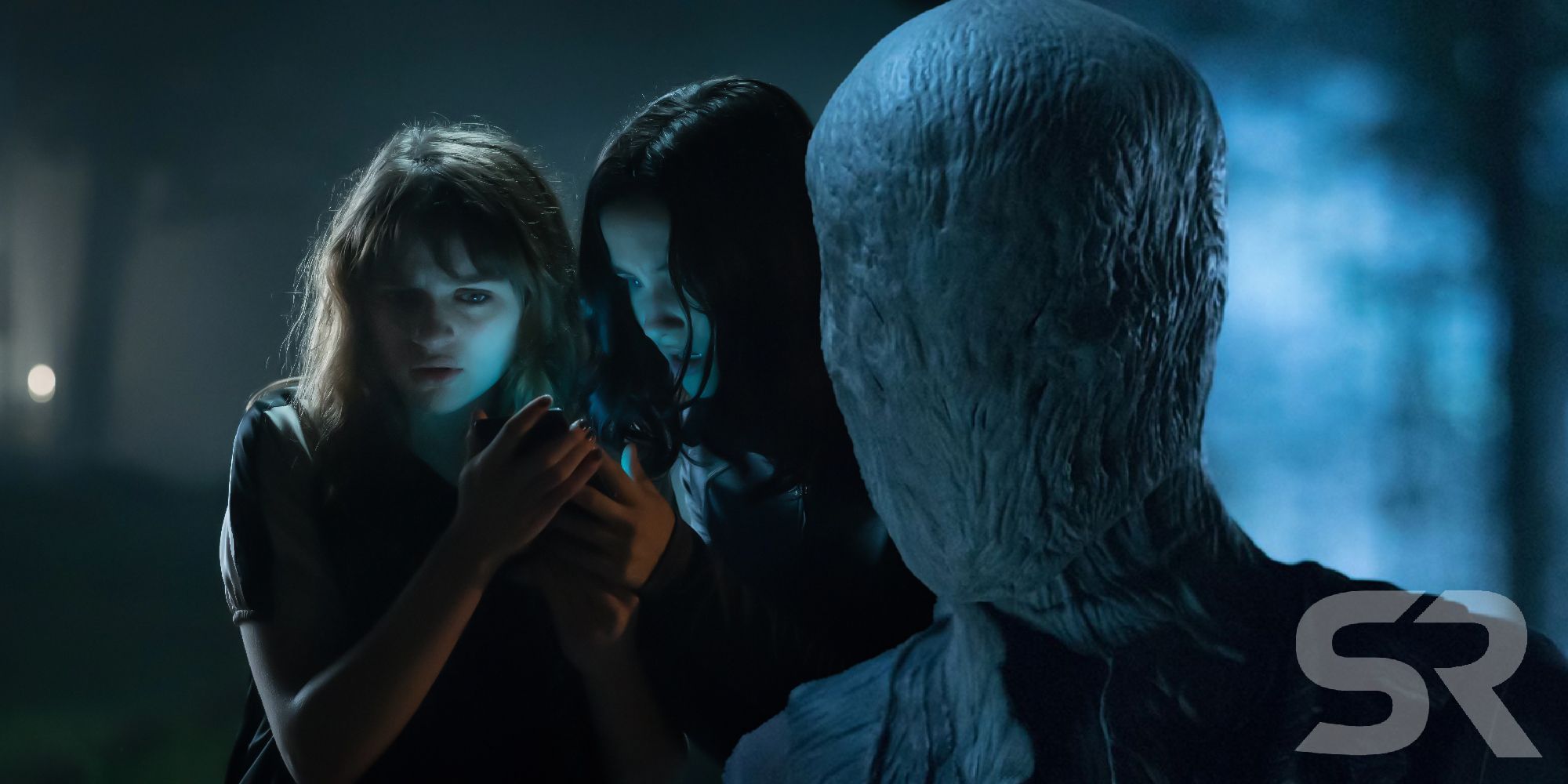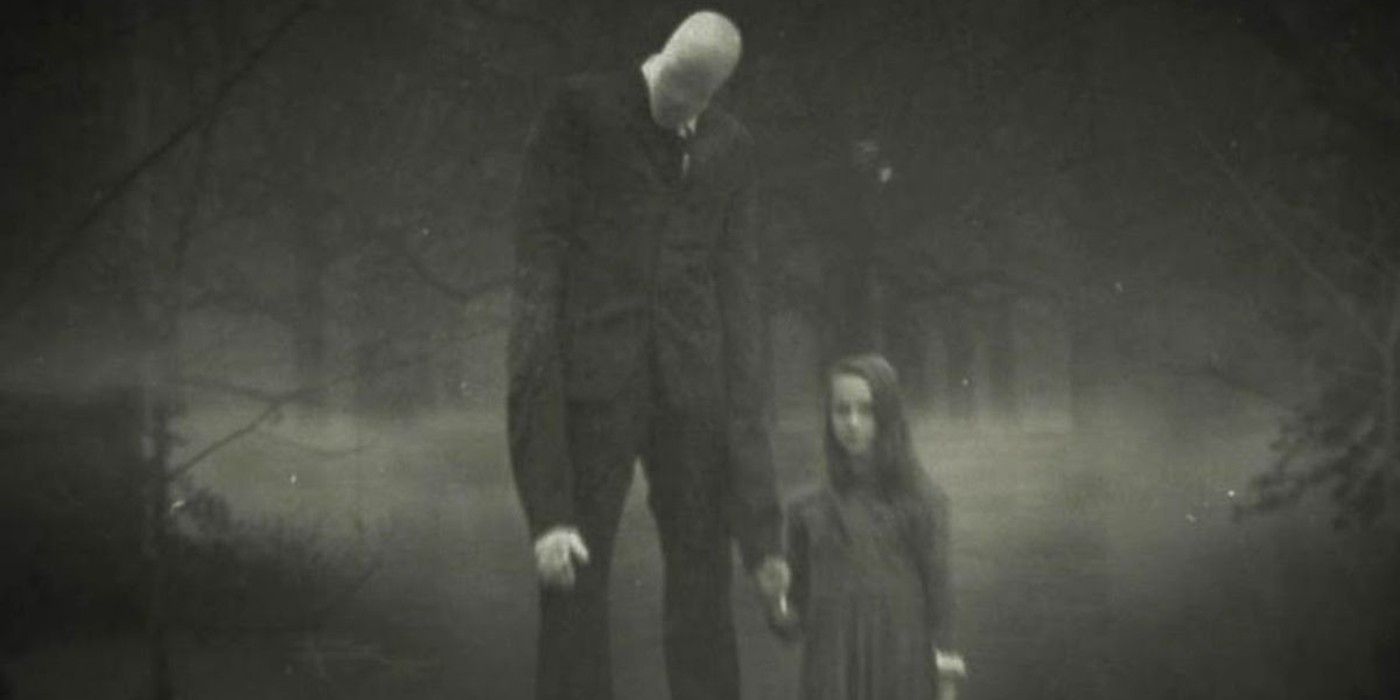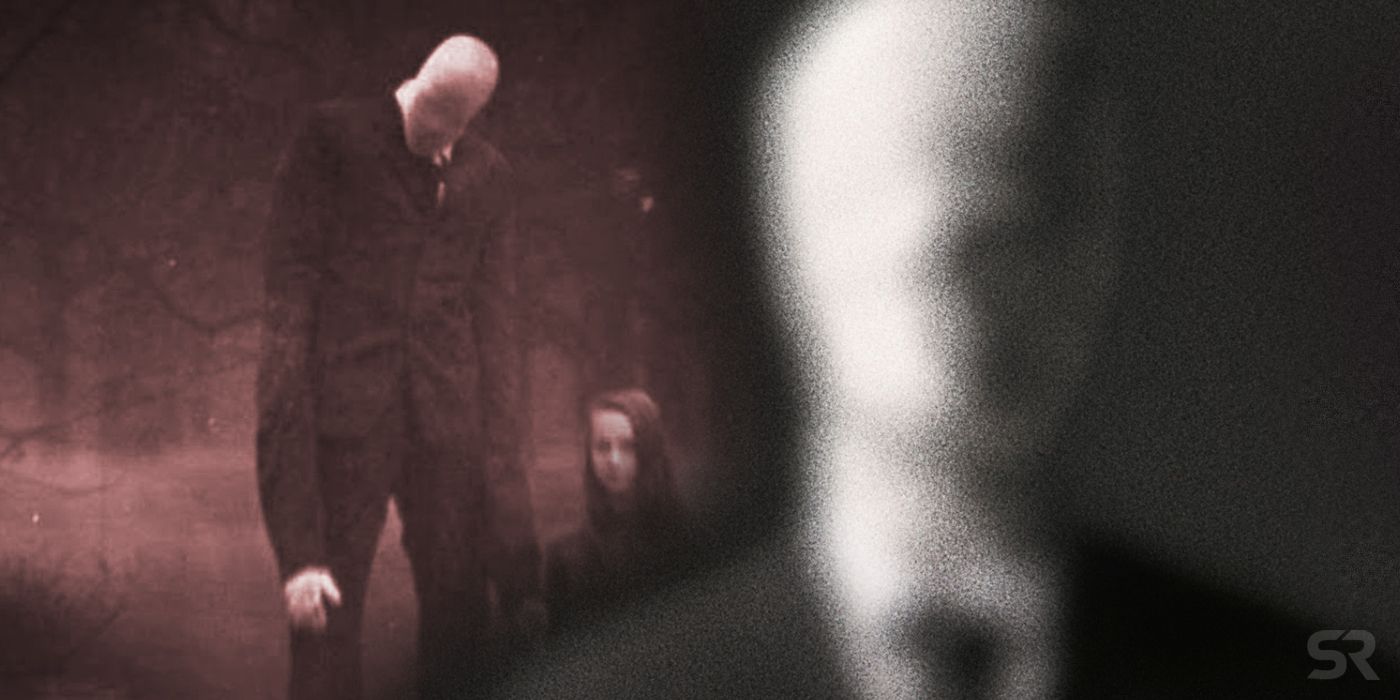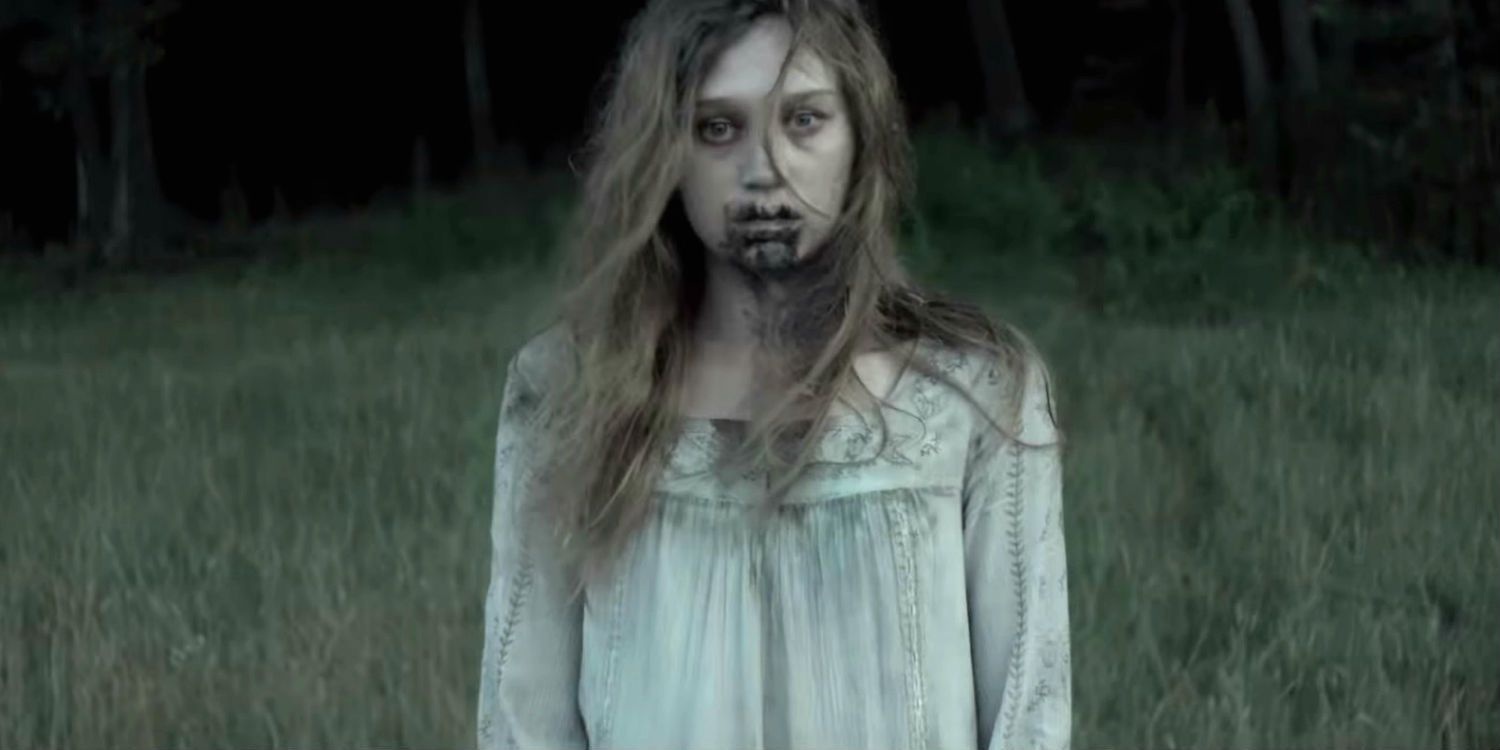2018's Slender Man was a crushing disappointment for fans of horror cinema and creepypasta alike, but in retrospect viewers can see that the urban myth adaptation revealed its fatal flaw as early as its first trailer. The film is an impossible to follow mess which sees a quartet of interchangeable teenage girls summon the eponymous spaghetti-limbed specter and fall victim to his busy hands one-by-one.
At least, that's what Slender Man's story seems to be about; the film was cut so heavily and hurriedly pre-release that it ended up missing some dramatic sequences, which are featured front and center throughout its actually fairly scary trailer. Misleading horror trailers are nothing new, with one audacious promo for Alien 3 falsely suggesting that the film takes place on Earth. However, the missing scenes featured in Slender Man's trailer tell the story of a harsher, scarier film that the studio wasn't willing to stand by.
The original, R-rated cut of Slender Man was filled with genuinely scary scenes which were edited out to secure the film a PG-13 rating from the MPAA. However, in a jaw-dropping display of carelessness, the studio never shot any alternative scenes to replace these sequences with. Worse still, they opted to feature the deleted scenes prominently in the film's first trailer, advertising a completely different and far superior film. This problem that recurs throughout horror history, although Slender Man's creators had a better excuse than many, as they attempted to avoid capitalizing on a real-life Slender Man-related tragedy whilst still making a movie about Slender Man.
What Slender Man Cut (& Its Trailer Kept)
Horror movie trailers ruin big scares all the time, and even great horror releases fall victim to this frustrating trend. It's not unusual for Slender Man to have spoiled some of the most intense moments, but that's not what went wrong with the film's first trailer. Instead, the problem was that the finished movie failed to include any of these scares, and without providing an alternative ending to the subplots they focused on, ended up almost impossible for viewers to decipher. Directed by Sylvain White of The Losers fame, even in its fullest edit, the film barely touches on Slender Man's origins and history, opting instead to leave him as a mysterious and threatening figure.
Amongst the scenes glimpsed in Slender Man's trailer are a suicide, wherein the heroine's love interest leaps off a bridge to his presumable death, a wince-inducing sequence where one of the main characters gouges her own eyes out with a scalpel during science class, and a lengthy scene in which an unidentified, bloodied young woman emerges from the woods.
The scenes don't sound vital, but unlike the superficially similar 2012 horror hit Sinister, whose deleted scenes were removed for pacing reasons, anyone who has seen Slender Man can tell that the absence of its cut scenes renders the movie nonsensical. Those missing moments fill in gaping plot holes that are unexplained by the finished product. Cutting this vital context results not only in a very short run-time for Slender Man, but also a bizarre, unintentionally Lynchian—and often unintentionally hilarious—movie where characters disappear and reappear with no explanation.
The character who gouged out her own eyes? In the final cut, she's last seen just sort of standing and staring out a window, which terrifies her friends, for some reason. As for the love interest, his character seems to simply wander out of the film's action, leaving viewers wondering what happened to the ostensible heroine's short-lived boyfriend.
Why Slender Man Was Always Doomed To Fail
Slender Man's censors weren't simply snipping away at the movie for the sake of it. PG-13 horror movies can be good, and the genre is full of successful examples of filmmakers working around the rating's inherent limitations. Happy Death Day, for example, mixes rom-com tropes into a slasher setup and avoids stale cliches, thus more than excusing its bloodless rating. That said, Happy Death Day didn't have a real, serious crime to contend with. Since the film's inception, Slender Man was always going to have to address the 2014 stabbing of Peyton Leutner.
This infamous incident saw a child miraculously survive multiple stab wounds inflicted by two other small children who claimed they were sacrificing her to the fictional character. Unlike Jeff the Killer and many other creepypasta phenomenons, this recent famous case made filming a Slender Man movie a morally difficult proposition. Sure enough, the release of the film's first trailer led one of the assailant's fathers to deride the film was a cash grab in poor taste, prompting the infamous edits outlined above. So the question of whether Slender Man could ever have succeeded is less one of specific edits and more whether anyone would want to watch a violent horror movie so closely connected to a real-life tragedy.
What Slender Man Tells Us About Horror Movie Trailers
It's fair to suggest Slender Man could have been a tasteless film even in its original R-rated format. After all, the perceived tackiness of The Haunting of Sharon Tate played a huge part in that film's terrible critical reception. Not every horror film has such an understandable reasoning behind its censorship, and yet the genre's history is marked by many misleading trailers that leave audiences wondering what version of the film they saw advertised. Perhaps most infamously, the 2006 remake of Black Christmas was promoted with a trailer that included scenes shot after the movie finished filming and without the director's knowledge. Perhaps unsurprisingly, the film was produced by the infamous Weinstein brothers, and the creator complained of constant disruptions by the pair well before the trailer incident.
More recently, Paranormal Activity 3 came under fire for including numerous, promising moments in its promotional materials which were nowhere to be seen in the theatrical cut. As more horror movies in 2020 are opting for a PG-13 rating, it's likely that this trend may continue for some time.




